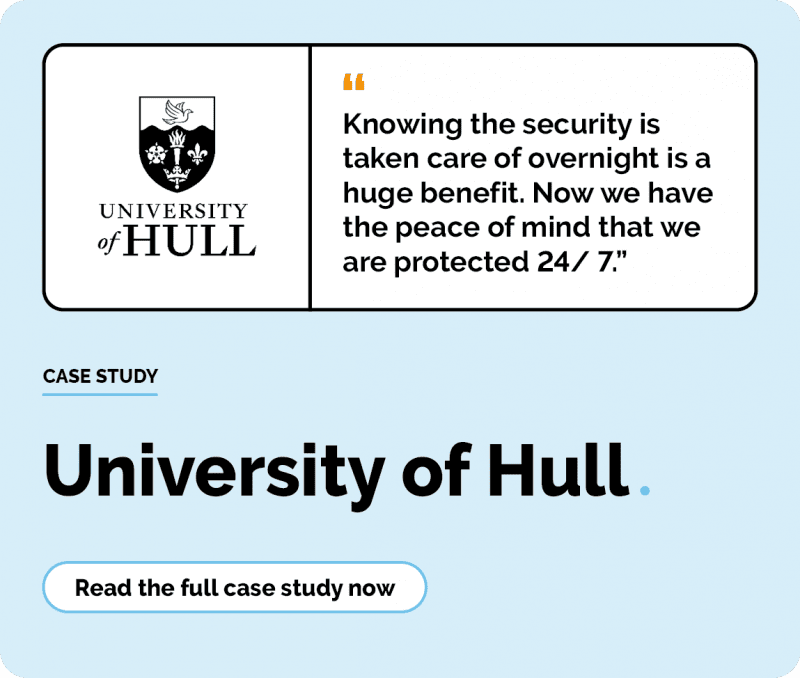What are IoT healthcare solutions and how are they transforming the sector?
3 minute read
Kelsey Smith
February 4th, 2025
As healthcare organisations in the UK grapple with rising costs, high demand, and staffing issues, the Internet of Things (IoT) is one of many technological advancements helping healthcare organisations improve patient care despite the challenges they face.
IoT healthcare solutions describes a network of devices that are embedded with sensors and network connectivity. These technologies can range from simple wearable devices to complex cloud-based software systems, all aimed at enhancing patient care and improving outcomes.
What is IoT?
IoT enables devices to communicate and exchange data, creating a connective stream of information. IoT can be a software suite or a cloud service, with the platform’s main purpose being to manage and monitor hardware, software, processing abilities, and application layers.
Commercial IoT is when devices and systems are utilised in business environments, including companies and healthcare institutes, to manage consumer interactions and ensure data traceability.
IoT healthcare solutions are a type of commercial IoT that use connected devices to monitor, diagnose, and treat patients remotely. They are revolutionising treatment processes by improving communication streams.
IoT in healthcare applications
IoT is all about connectivity. Having increased connection to devices, tools, and systems makes a bigger difference than you would think.
IoT in healthcare is creating new opportunities for both patients and healthcare providers. From remote monitoring systems, which are found to reduce hospital admissions by 45-50%, to preventative care and personalisation.
Remote monitoring systems that are used by patients in day-to-day life, like heart monitoring devices and glucose meters, have changed the lives of those using them. They have freedom and control. Patients are less likely to seek medical treatment for smaller problems, leaving patients feeling happier and healthcare organisations more in control of workload.
These systems are also used within hospitals. Think blood pressure monitors, pulse oximeters, and ECG’s. These devices enable healthcare workers to help other patients while still monitoring and caring for others, reducing problems related to understaffing.
Devices that focus on preventative care are utilised in care homes, chronically ill patients, and those with ongoing health issues. Sensors and wearable devices react to personal or environmental factors such as temperature changes, specific movements, or abnormal patterns in the patient’s vitals. Immediate reactivity to these changes ensures appropriate preventive measures are put in place. This saves the patient from having to seek additional medical help and frees up the time of the healthcare provider.
With IoT healthcare solutions collecting a vast amount of medical information, the question as to who manages and secures that data arises. With IoT being a cloud-based solution, a lot of the data management is automated and stored in a secure cloud environment, leaving you with one less thing to worry about.
AI and IoT healthcare solutions
Within IoT, physical events are monitored and processed to generate suitable reactions. This means that any IoT application employing software to react to an event represents a fundamental type of AI, making AI and IoT completely linked.
It’s not the question as to whether to use AI and IoT together, the question is how far you take it. This depends on the complexity of the systems IoT supports. The more conditions needed for certain workflows, the more complex the AI.
AI has the potential to enhance IoT systems as long as the technology surpasses basic IoT programming and doesn’t introduce latency that might undermine real-time control.
The future of IoT healthcare solutions
IoT is already being used for several applications within healthcare institutions, but as technology develops and grows, so does IoT.
The global market share of IoT healthcare solutions is due to grow 17.8% by 2028. As the IoT becomes more sophisticated, it’s expected to see widespread adoption across the healthcare industry. As more healthcare providers recognise the potential of these technologies, the focus is shifting towards maximising their benefits, ensuring that IoT solutions continue to improve patient experiences by improving communication and diagnoses speed.
Talk to us about IoT healthcare solutions
We’re here to tell you everything you need to know about IoT. Get in touch with our specialists to find out more.
Contact us >


